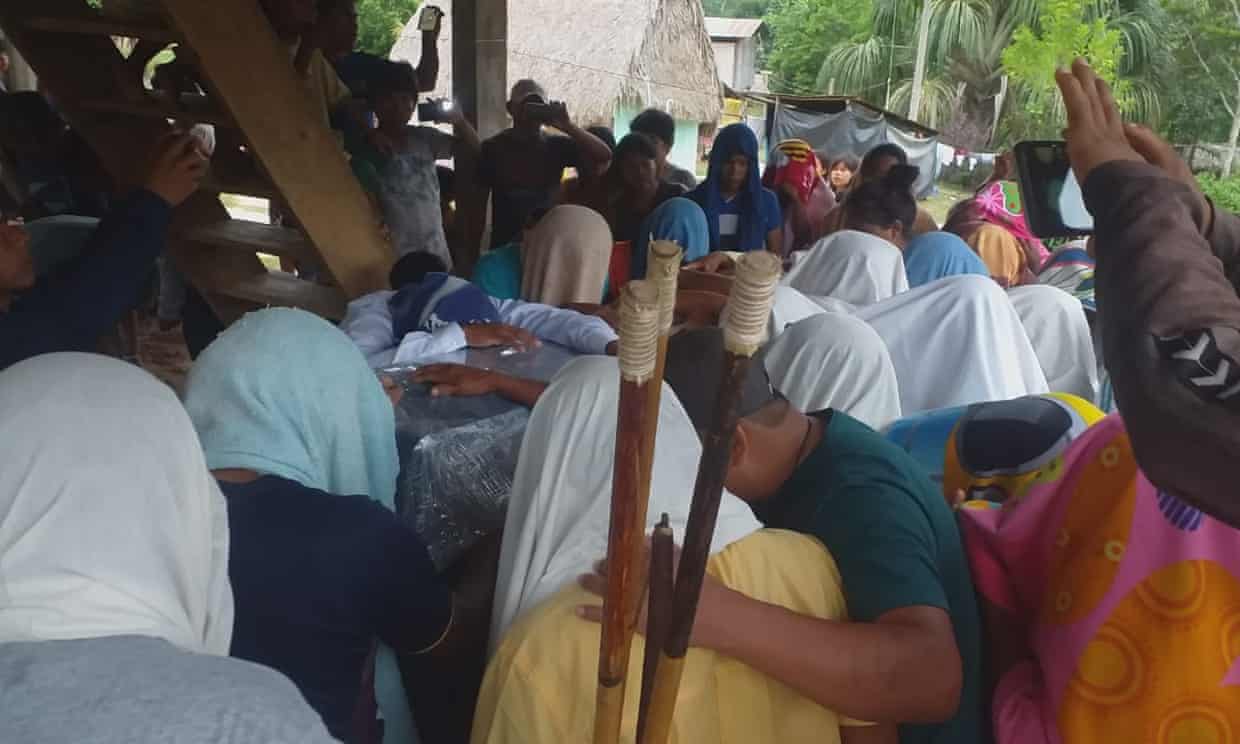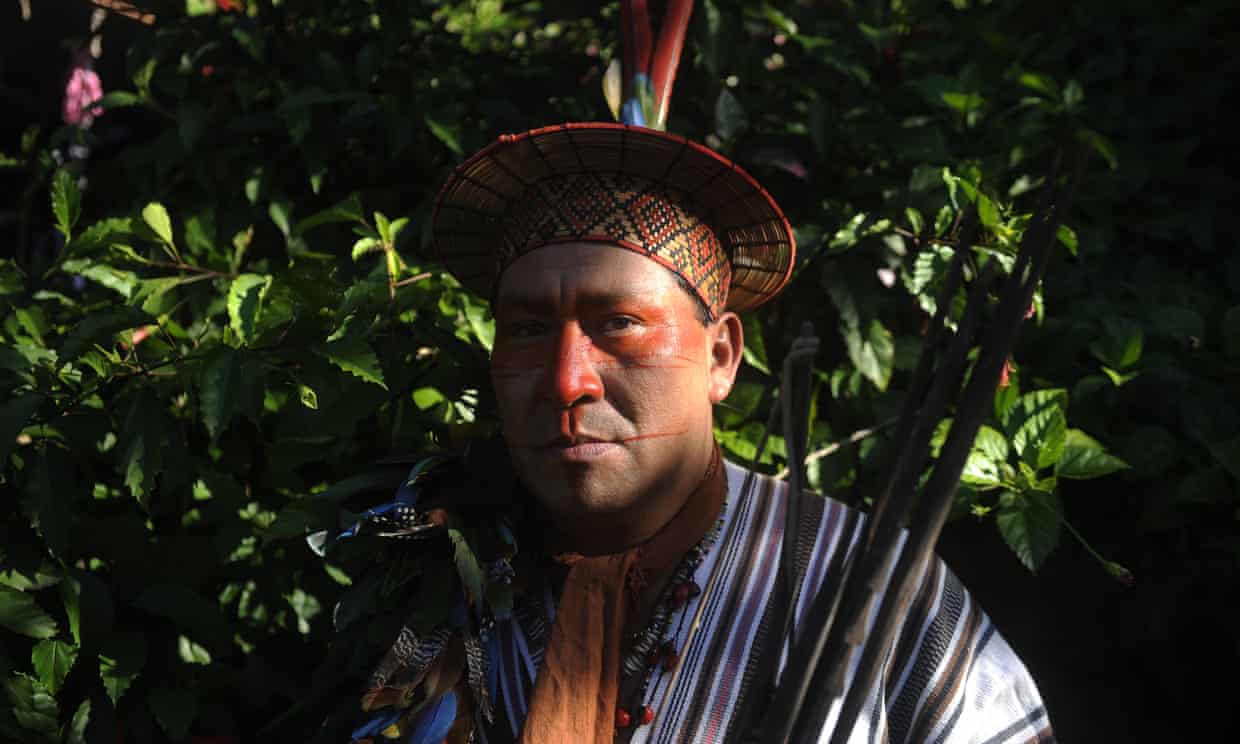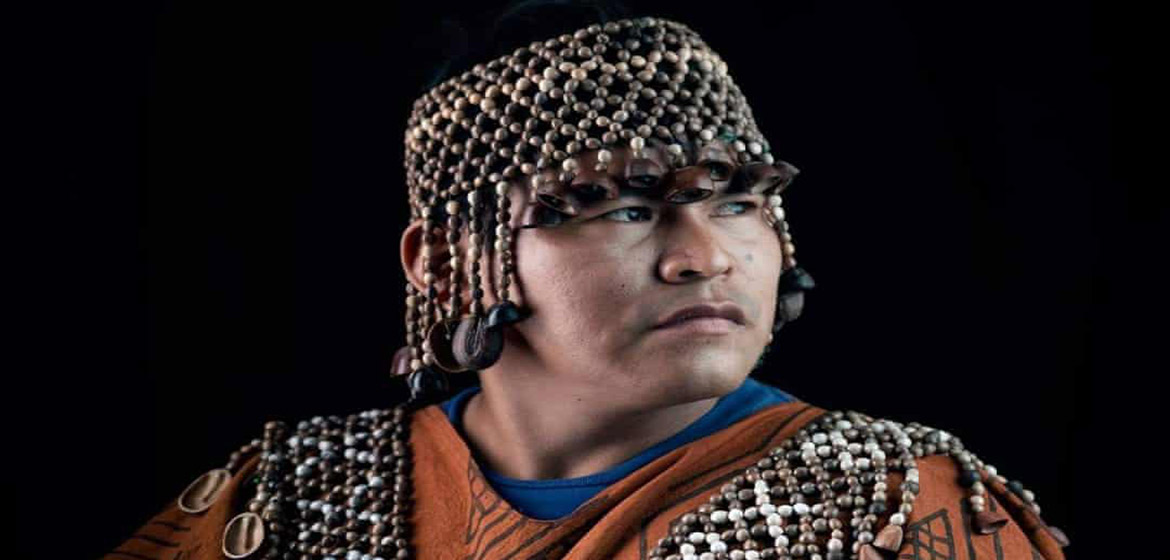Communities call for protection after string of killings linked to rush for land to grow coca, under cover of the pandemic
By Dan Collyns
“We’re looking for you, dead or alive,” is one of the daily threats that Herlín Odicio receives on his mobile phone.
The leader of the indigenous Cacataibo people in Peru’s central Amazon has been forced into hiding for standing up to drug traffickers trying to steal his land. “We’ve reported coca plantations on our land so many times and nothing has been done,” Odicio said.
He said the threats against his life spiralled after he turned down an offer of 500,000 Peruvian soles (£96,500) for every drug flight leaving from a secret airstrip on his territory. “They’re coming after me,” he said by phone from a secret location in Peru. “I can’t walk freely in my community. [The narcos] are looking for me.”
Indigenous communities in Peru’s central Amazon are experiencing an increase in violence, threats and harassment as drug gangs target their land to grow coca, the plant used to make cocaine. Covid-19 restrictions have made the remote region even more vulnerable by slowing state efforts to protect land and eradicate illegal coca cultivation.
This – Peru is the world’s second biggest producer of cocaine after Colombia, according to the – has come at the cost of indigenous lives. In February, , 30-year-old Yénser Ríos and 28-year-old Herasmo García, were found shot dead 12 days apart in the Padre Abad province of Ucayali, an area riddled with coca plantations and clandestine airstrips for transporting cocaine into Bolivia.

The funeral of Herasmo García, a Cacataibo man who was shot dead in February, in his village in the region of Huánuco, in Peru’s central Amazon. Photograph: Courtesy of Fenacoca
The head of police criminal investigations in Peru, General Vicente Tiburcio, said police were investigating if the men’s deaths were revenge killings by coca-growers. Tiburcio said Ríos had been responsible for patrolling his community’s territory and was known to have taken part in coca eradication.
In April 2020, Arbildo Meléndez, a leader from the same Cacataibo indigenous group, near the village of Unipacuyacu. He had reported the presence of drug gangs and secret airstrips to the authorities, and had asked the Inter-American commission on human rights to demand the Peruvian state protect him.
These men are three of the seven Amazonians in Peru killed during the pandemic as land grabbers exploit the crisis to seize land to grow coca, as well as for logging and cash crops such as palm oil.
For the state we don't exist. We are constantly harassed and threatened
Berlín Diques
The most recent victim is Estela Casanto, 55, an indigenous Asháninka, who was found dead on 12 March. “Her family found bloodstains in her bed,” said Teddy Sinacay, president of Ceconsec, an organisation of 120 Asháninka communities in Peru’s central Amazon. “She had been beaten, dragged from her house. They took her about 40 metres and threw her in a gully. They then dragged her further, hitting her on the head with a stone.”
Police are still investigating the circumstances, but her death provides yet more evidence of the precariousness of indigenous land claims, and the often deadly consequences of trying to assert them.
Indigenous Amazonians say police and prosecutors are failing to follow up their warnings, and are allowing killers to operate with impunity. In total, nine environmental campaigners have been killed in Peru since the start of the pandemic, but there has been no murder conviction in any case.
Meléndez’s alleged killer was arrested but released on bail on a manslaughter charge after judges and prosecutors accepted his plea that his gun had gone off by accident.
“For the state, we don’t exist,” said Berlín Diques, a native leader in Ucayali. “We are constantly harassed and threatened,” he said.

Berlín Diques, president of Orau, the branch of Peru’s umbrella federation of Amazon peoples in Ucayali. Photograph: Hugo Alejos
“We’ve lost trust in the prosecutor’s office and the police,” said Odicio, who received police protection for a few days last year but now has none.
Álvaro Másquez, a lawyer specialising in indigenous rights at Lima’s, said the scales are tipped in favour of outsiders seeking to buy land in indigenous territories. For the ancestral inhabitants, however, acquiring a land title.
“It’s common practice for drug traffickers, land traffickers and illegal loggers to end up bribing the officials who authorise forestry or agricultural concessions and land titles,” said Másquez.
It's common practice for drug traffickers, land traffickers and illegal loggers to bribe officials
Álvaro Másquez
At the same time, “structural racism in the judiciary and prosecutor’s office” means impunity is the norm for land grabbers, he said.
The territorial insecurity of indigenous people has made them easy targets for drug traffickers who use “established organised crime networks” to exploit their weakness, said Vladimir Pinto from Amazon Watch, which works to protect the rainforest and indigenous people’s rights.
As coronavirus restrictions ease in Peru, coca eradication – which dropped from an average of 25,000 hectares (61,000 acres) of coca a year pre-pandemic to about 6,000 hectares in – has just resumed in Cacataibo indigenous territory.
This worries Diques, who expects there will be reprisals by drug gangs. “The cannon fodder will be us indigenous [people],” he said. “The authorities leave and we will be blamed. We don’t want to cry over more deaths.”
Source: The Guardian
Related to SDG 10: Reduced inequalities and SDG 16: Peace, justice and strong institutions



